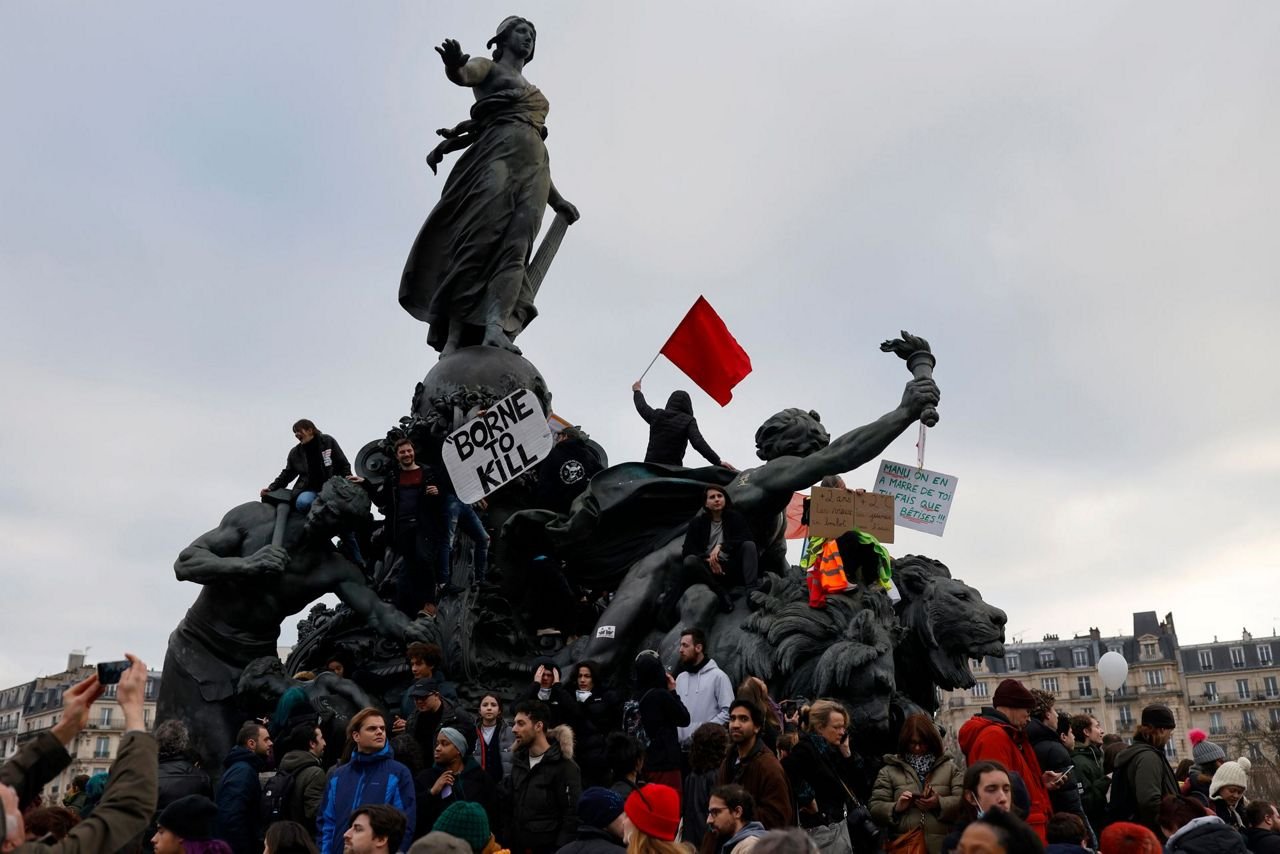
In March, the French public continues to mobilize in unprecedented numbers against President Emmanuel Macron’s controversial pension reform. Almost two months into the movement, the determination of the French population remains unwavering. On March 7, approximately 3.5 million people took to the streets across the country in more than 300 rallies, according to trade unions. This marked the sixth national day of action since January 19, with record-breaking participation. Despite the massive public opposition, Macron has shown little concern, symbolically dismissing the protests by making public appearances, such as drinking beer in a Congolese nightclub during the day of action. The French government, led by Macron, has repeatedly tried to deflect the growing discontent by pointing to other pressing global issues, such as climate change, inflation, and the intensifying economic crisis, all of which are byproducts of the capitalist system that Macron represents.
The French working class and youth remain undeterred by these attempts to downplay their struggle. In fact, these efforts only seem to fuel greater anger and determination. As mass mobilizations continue to grow incrementally, the ruling class’s hope that the movement would fade has been proven wrong. In cities such as Reims, the number of demonstrators surged from 6,000 on January 31 to 7,500 by March 7. Similarly, in cities like Nantes, Caen, and Angers, record turnouts of demonstrators highlighted the increasing momentum of the protests.
The remarkable strength of this movement has been facilitated by an unusual unity between various trade unions. For the first time in many years, major unions, including the more progressive CGT and the traditionally conservative CFDT, have come together to oppose the pension reform. These unions called for a national strike, resulting in the shutdown of all seven oil refineries in France, significant disruptions to public services, and widespread strikes in sectors such as education and transportation. French national rail services were reduced by 75%, while 33% of flights were canceled due to airline workers’ participation in the strikes.
The energy sector was among the most affected. Kepler analyst Emeric de Vigan remarked that the strikes caused “one of the biggest impacts on the energy sector we’ve seen,” with more than 50% of EDF workers participating in the walkouts. Despite the government’s assertions that fuel supplies remained stable, shortages were reported at petrol stations, and electricity production was significantly reduced. Not a single drop of oil was transported out of the refineries during this period.
It is clear that the focus of the movement is expanding beyond the pension reform. Many demonstrators are directing their frustrations at Macron’s government and the capitalist system it represents. One municipal worker and CGT activist expressed their frustration by stating: “We are not just out for our pensions; we are out because we are fed up. They are sitting on a golden armchair, and we are sitting on a trash can.”
Amid the high inflation and deteriorating living conditions, the strikes have been radicalizing new layers of the working class, many of whom are joining the unions. Over the last month alone, CGT gained 12,000 new members, and similar numbers were reported for CFDT. This growing mobilization reflects a broader crisis within French capitalism, as workers seek to defend their wages and living standards.
While the movement has made significant progress, many workers and youth understand that isolated “days of action” may not be sufficient to topple Macron’s government or defeat the pension reform. Some sectors of the working class have begun advocating for unlimited strikes. The CGT federations representing workers in petrochemicals, railways, energy, and other industries have already declared indefinite strike actions, further intensifying the pressure on the government.
In addition to the strikes, a growing number of students and youth have become involved in the movement. On March 7 and again during the March 8 International Women’s Day mobilization, student organizations and youth activists joined the demonstrations in significant numbers, underscoring the potential for a broader movement that unites students and workers. However, to fully capitalize on this momentum, the movement must address the concrete challenges facing young people and workers, including issues such as low wages, privatizations, and insufficient public services.
Despite overwhelming public support, with 70% of the population opposing the pension reform and 56% supporting rolling strikes, there is concern that union leaders and reformist political figures may inadvertently undermine the movement by confining the struggle to parliamentary negotiations. For example, Jean-Luc Mélenchon, leader of the left-wing La France Insoumise party, has called for a public referendum or the dissolution of parliament. While these proposals may offer a democratic solution, many fear that they will divert attention away from the more radical class struggle needed to defeat Macron’s policies.
In conclusion, the events of March 2023 demonstrate the immense potential of the French working class to challenge the government’s unpopular pension reform and broader economic policies. However, for the movement to achieve its full potential, it will need to build on the momentum generated by the strikes and protests and push for an all-out general strike. Only by uniting the various sectors of society under a common cause can the French people hope to bring about meaningful change and force Macron’s government to reverse its course. The coming weeks will be decisive in determining the outcome of this historic movement.

